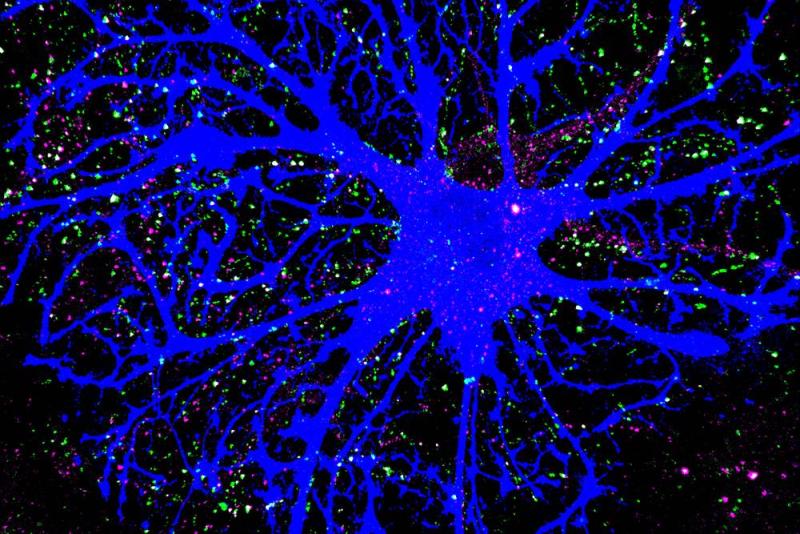
Dysfunction of intricate astrocyte cells may underlie devastating diseases like autism, schizophrenia and epilepsy
Brains are made of more than a tangled net of neurons. Star-like cells called astrocytes diligently fill in the gaps between neural nets, each wrapping itself around thousands of neuronal connections called synapses. This arrangement gives each individual astrocyte an intricate, sponge-like structure.
New research from Duke University finds that astrocytes are much more than neurons’ entourage. Their unique architecture is also extremely important for regulating the development and function of synapses in the brain.
When they don’t work right, astrocyte dysfunction may underlie neuronal problems observed in devastating diseases like autism, schizophrenia and epilepsy.

A 3-D-printed model of a single astrocyte from a mouse brain shows the sponge-like structure of these cells. Photo credit: Katherine King, Duke University.
The Duke team identified a family of three proteins that control the web-like structure of each astrocyte as it grows and encases neuronal structures such as synapses. Switching off one of these proteins not only limited the complexity of the astrocytes, but also altered the nature of the synapses between neurons they touched, shifting the delicate balance between excitatory and inhibitory neural connections.
“We found that astrocytes’ shape and their interactions with synapses are fundamentally important for brain function and can be linked to diseases in a way that people have neglected until now,” said Cagla Eroglu, an associate professor of cell biology and neurobiology at Duke. The research was published in the Nov. 9 issue of Nature.
Astrocytes have been around almost as long as brains have. Even simple invertebrates like the crumb-sized roundworm C. elegans has primitive forms of astrocytes cloaking their neural synapses. As our brains have evolved into complex computational machines, astrocyte structure has also grown more elaborate.
But the complexity of astrocytes is dependent on their neuronal companions. Grow astrocytes and neurons together in a dish, and the astrocytes will form intricate star-shaped structures. Grow them alone, or with other types of cells, and they come out stunted.